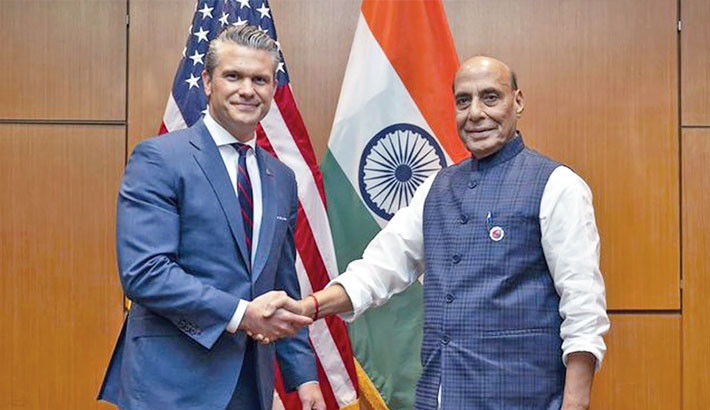India, US Extend Defence Partnership Amid Trade Tensions, Indo-Pacific Uncertainty
Published: 01 Nov 2025

India, US Extend Defence Partnership for 10 Years Amid Trade Tensions, Indo-Pacific Uncertainty
India and the United States on Friday (October 31) renewed their Defence Framework Agreement for another ten years, marking the third such extension of the pact that defines the strategic contours of their security cooperation.
The agreement was signed on the sidelines of the ASEAN Defence Ministers Plus summit in Kuala Lumpur by defence minister Rajnath Singh and US secretary of War Peter Hegseth.
In a post on X, Hegseth said the renewed framework “advances our defense partnership, a cornerstone for regional stability and deterrence”. He added that both sides were “enhancing our coordination, info sharing, and tech cooperation” and that defence ties “have never been stronger”.
Singh wrote on X that the agreement would “provide policy direction to the entire spectrum of the India-US Defence Relationship”. Calling it the start of a “new era,” he said defence would continue to be a “major pillar” of bilateral ties and a “signal of our growing strategic convergence”. “Our partnership is critical for ensuring a free, open and rules-based Indo-Pacific region,” he added.
When Prime Minister Narendra Modi travelled to Washington in February after US President Donald Trump’s second inauguration, the joint statement had announced plans to sign a new ten-year framework for the “US-India Major Defense Partnership in the 21st Century” later this year.
India and the US first signed a defence cooperation agreement in 1995, which marked a breakthrough after years of Cold War estrangement. A decade later, in June 2005, then defence minister Pranab Mukherjee and US defence secretary Donald Rumsfeld signed a 10-year Framework for Defence Relationship, which was renewed in 2015.
Since 2008, defence trade between the two countries has grown from almost nothing to about $24 billion, marking the US among the top five defence sellers for India. In February, both leaders agreed to the procurement of six additional P-8I maritime patrol aircraft, as well as co-production and acquisition of Javelin anti-tank guided missiles and Stryker armoured vehicles.
The renewal of the framework comes amid a period of strain in bilateral relations following the Trump administration’s decision to impose steep tariffs on Indian imports. The United States had levied a 25 percent duty as part of its “reciprocal tariffs” policy, followed by an additional 25 percent penalty in August over India’s purchases of Russian oil.
There has also been questions raised about the Washington’s seeming lack of interest in amping up its Indo-Pacific strategy in Trump’s second term in recent months. The Quad, comprising of India, US, Japan and Australia, had been revived in 2017, to act as the “centrepiece” for the strategy. However, while the foreign ministers have met twice, a planned annual leaders’ summit is not in the works, and neither has US President Donald Trump made any reference to the grouping in his extensive public remarks.
Courtesy: The wire

